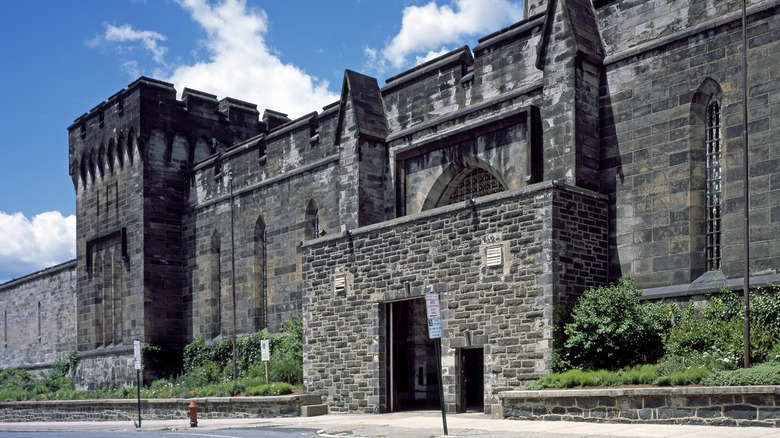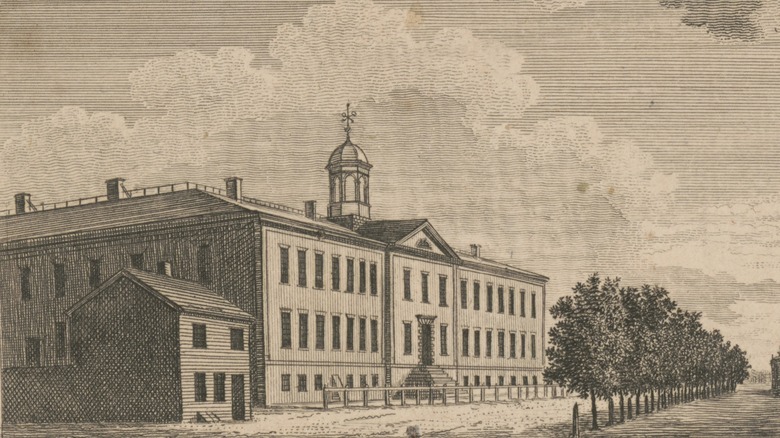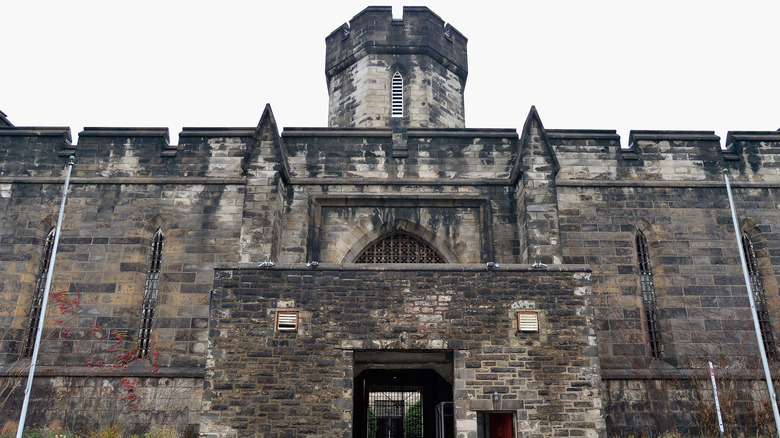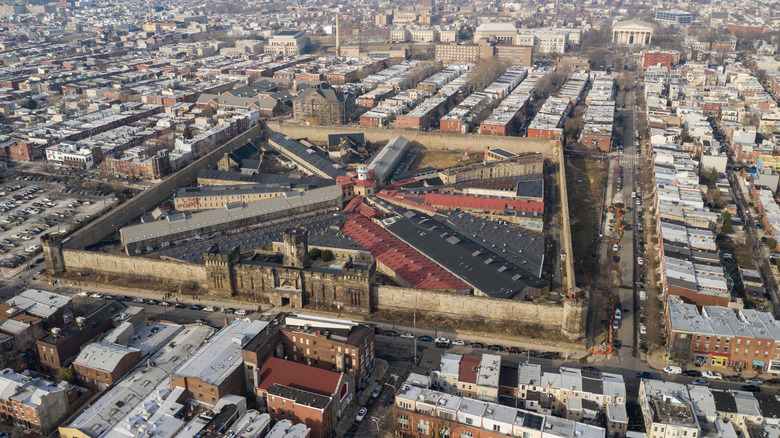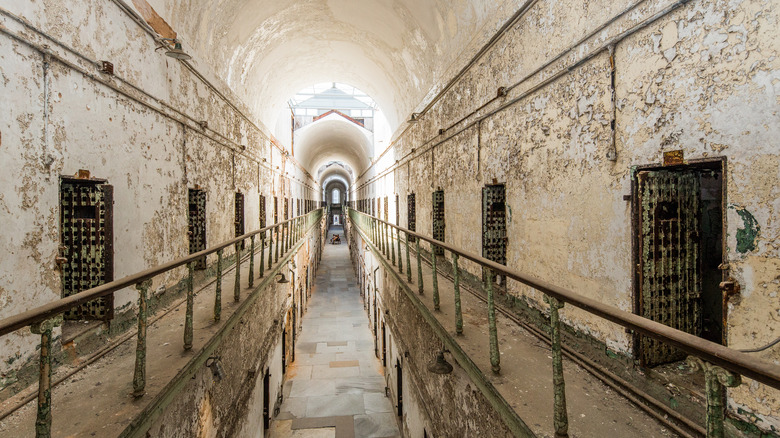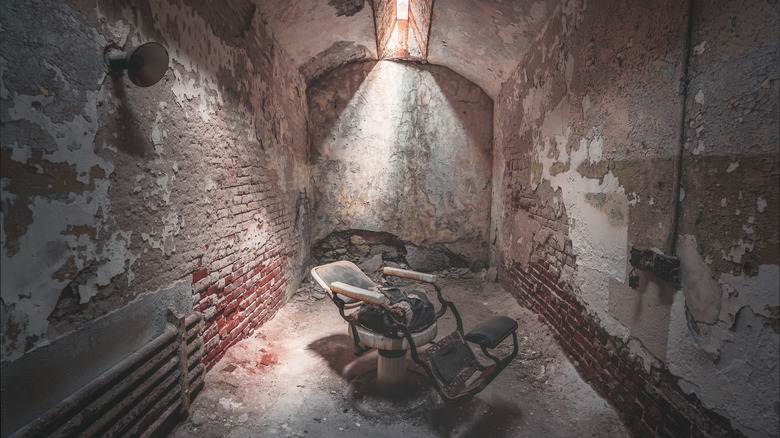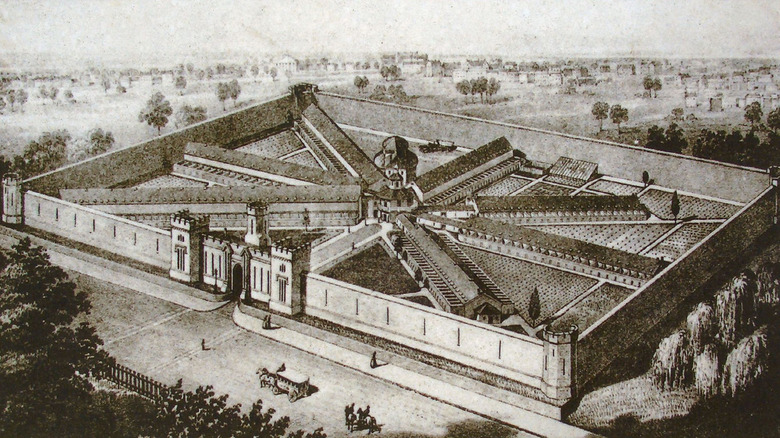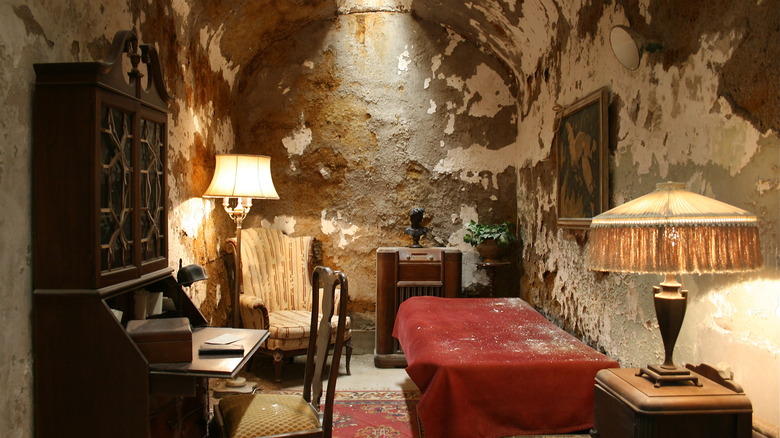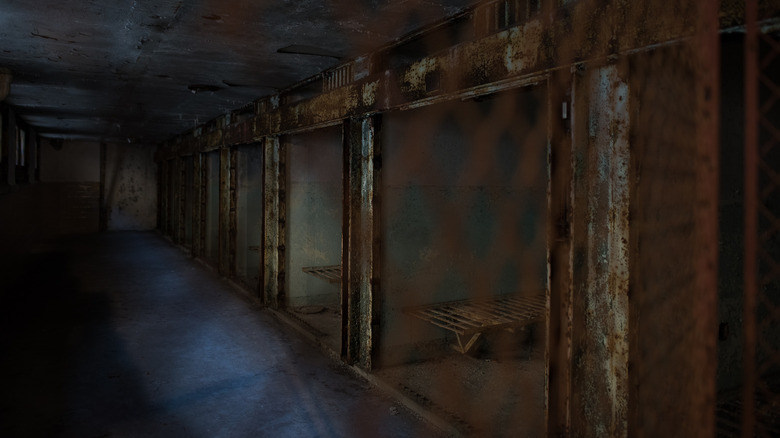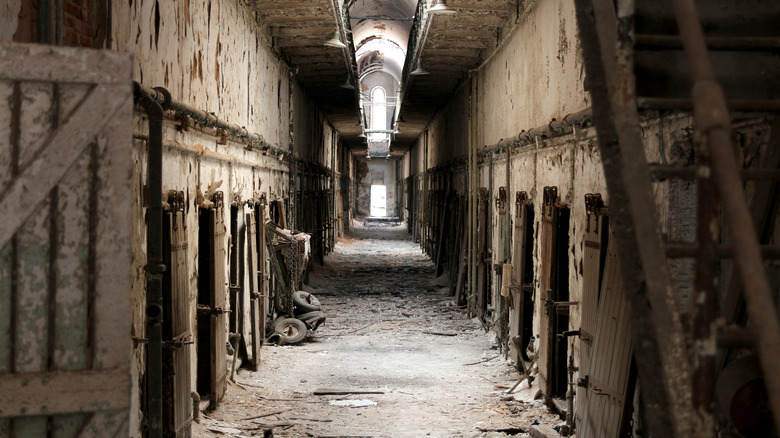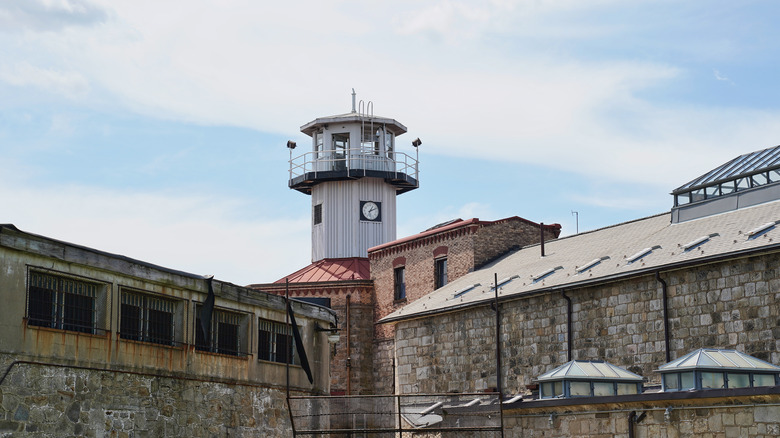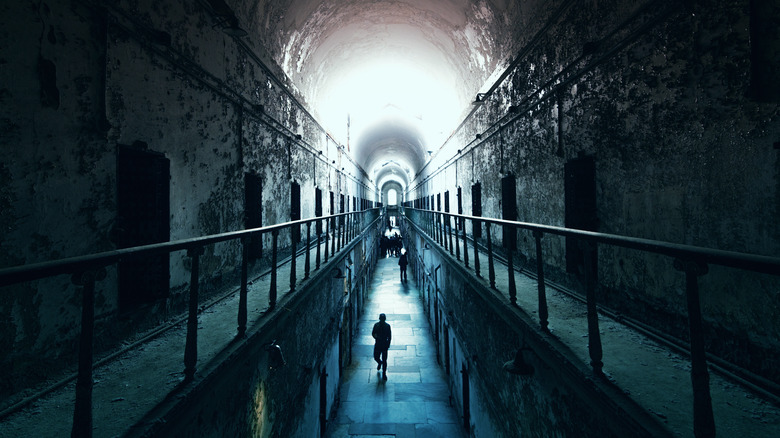The History Of The World's First Penitentiary
Jails and prisons have existed in various forms around the world for hundreds of years. Although the use of penitentiaries became more common during the Medieval Inquisition in Europe, especially during the Papal Inquisition, penitentiaries as people understand them today were largely influenced by Quaker ideology and originated in Pennsylvania.
It was through penitentiaries that the use of solitary confinement became established as a form of incarceration. At the time, because an alternative prison sentence likely included hard labor, solitary confinement was considered a reformed, gentler kind of imprisonment.
It wasn't long before it became clear that solitary confinement was just as, if not more, harmful as a prison sentence that included hard labor. Upon witnessing the solitary confinement of imprisoned people, author Charles Dickens wrote, "I hold this slow and daily tampering with the mysteries of the brain to be immeasurably worse than any torture of the body."
In July 2021, it was estimated that between 41,000 and 48,000 people in the United States were being held in solitary confinement. While the Eastern State Penitentiary no longer operates as a prison today, its influence on the legacy of solitary confinement is still strongly felt.
Origins in the Walnut Street Jail
The Eastern State Penitentiary took inspiration from the Walnut Street Jail, which was built in 1776 in Philadelphia. In 1790, a "Penitentiary House" was added to the Walnut Street Jail. The cells in the new wing were 6-by-8 feet and were intended for solitary confinement, according to "Prisons and Prison Systems," by Mitchel P. Roth. However, these cells were ultimately used more as a punishment for breaking a rule than as a place to serve the entirety of one's prison sentence.
"The Social History of Crime and Punishment in America," edited by Wilbur R. Miller, states the Walnut Street Jail can be considered one of the first prisons in the United States and is the "first important development in carceral punishment in the United States." This is due to the fact that numerous states copied the jail's methods, including Massachusetts, New Jersey, and Tennessee.
Overcrowding eventually led to the creation of the first prisons, with some trying to incorporate solitary confinement. In "The Deviant Prison," Ashely T. Rubin writes that 80 people imprisoned at Auburn State Prison in New York were taken to a solitary cell block on December 25, 1821, and isolated in a cell no wider than 4 feet with nothing but a Bible. Within two years, suicides and deaths were so common that those who survived solitary confinement, despite suffering severe mental and physical declines, were given pardons.
The world's first penitentiary
On March 20, 1821, construction for the Eastern State Penitentiary in Philadelphia was authorized at the cost of $100,000. According to "Eastern State Penitentiary: HSR Vol. 1," it was decided the prison would be founded around solitary confinement rather than prison labor. This policy was pushed by Thomas Bradford, who worked as an inspector at Walnut Street Jail and would later work at Eastern State Penitentiary, as well as for the Philadelphia Society for Alleviating the Miseries of Public Prisons, also known as the Philadelphia Prison Society (PPS).
Since its creation in 1787, the PPS had advocated for reforms within the penal system, including Walnut Hill Jail's creation of solitary confinement cells. The system they advocated for was known as the Pennsylvania system, which involved solitary confinement, religious instruction, and the development of a trade skill. Although the Pennsylvania system wasn't used at the Walnut Street Jail, a variation of it was put into place at Eastern State Penitentiary, per "The Social History of Crime and Punishment in America."
Based on ideas of solitary confinement and inspiring penitence, this is how the prison became the "world's first true penitentiary," according to the Eastern State Penitentiary website.
One of the most expensive buildings in the country
The Eastern State Penitentiary took in its first imprisoned person in 1829. In "Silence," Jane Brox writes that Charles Williams, an 18-year-old Black farmer, was the first person to be imprisoned at Eastern State Penitentiary in October 1829. He was sentenced to two years of solitary confinement for stealing a gold seal, gold key, and silver watch, worth a total of $25, equivalent to $800 in 2022. Williams was taken to the penitentiary with a hood over his head to prevent him from seeing the layout of the prison.
The Eastern State Penitentiary was built with a "radial" design, with seven cell blocks extending from the center and 76 cells in each block, according to "Corrections Today," by Larry J. Siegel and Clemens Bartollas. The cells were also separated by 18-inch-thick stone walls, in order to keep imprisoned people from communicating with one another. And because imprisoned people were restricted to their cells for the majority of the day, cells were equipped with both sinks and toilets, per "The Social History of Crime and Punishment."
When Eastern State Penitentiary was finally completed in 1836, its cost totaled nearly $780,000, equivalent to almost $25 million in 2022, making it one of the most expensive buildings in the country of its time, per Eastern State Penitentiary.
Solitary prison cells
Designed for solitary confinement, the cells at the Eastern State Penitentiary were 12-by-8 feet and imprisoned people were allowed into the exercise yard for only one hour each day. Except for exercise hours and religious services, imprisoned people were expected to remain in their cells throughout the day. Robert Vaux, a member of the Philadelphia Prison Society (PPS), claimed the cells were "preeminently calculated to induce and effect reform in the minds of the prisoners," per The Philadelphia Inquirer.
In their cells, imprisoned people were forced to choose between making chairs, shoes, or textile products, which the prison would then sell in order to cover the costs of imprisoning people. According to "Criminal Justice in America," edited by Carla Lewandowski and Jeffrey Bumgarner, imprisoned people were denied any reading or writing materials. Their families and friends were also kept from visiting to intensify the isolation.
Even during activities that theoretically involved other imprisoned people, strict isolation was imposed. During mandatory religious services, imprisoned people were even placed in chairs that restricted their vision and kept them from knowing how many others were in attendance, per "Corrections Today."
Physical and psychological torture
Imprisoned people at Eastern State Penitentiary were subject to a variety of physical and psychological tortures while they were incarcerated. Punishments for breaking rules included an early form of water-boarding that involved chaining a person to a wall or a chair and then bombarding them with a flood of cold water, according to "The Social History of Crime and Punishment in America."
Another physical torture device was known as the iron gag, which connected a metal gag to people's arms with chains and caused a choking effect. "Possible Paths," edited by Robert Blair St. George, says at least one imprisoned Black man, Matthias Maccumsey, died as a result of the iron gag on June 27, 1833.
In 1834, Warden Samuel R. Wood and his officers were accused of physically torturing imprisoned people, in addition to other charges involving embezzlement of prison funds. But according to "Eastern State Penitentiary: HSR Vol. 1," they were acquitted by the investigative committee that reviewed those charges.
In addition, solitary confinement was (and still is) a form of psychological torture that ultimately led to high rates of mental illness in Eastern State Penitentiary, Rachel E. Walker writes in "Beauty and the Brain." And by 1926, solitary confinement was also used as punishment in smaller 4-by-8-foot cells, per "Eastern State Penitentiary." There were also reports of guards torturing and potentially killing imprisoned people with hot steam in the 1930s, per "Eastern State Penitentiary: HSR Vol. 2."
Eastern State Penitentiary as a tourist destination
The use of isolation at Eastern State Penitentiary was considered to be incredibly unique and turned the prison into a tourist destination, attracting a wide range of people who came to witness life in a penitentiary. In "Eastern State Penitentiary," Francis X. Dolan writes that during the 19th century, there were times when the prison was the largest tourist attraction in Philadelphia.
One of its most famous visitors was English writer Charles Dickens, who wrote about the penitentiary and its imprisoned people in 1842. The solitary confinement imprisoned people experienced particularly shocked Dickens, who wrote, "He sees the prison-officers, but with that exception, he never looks upon a human countenance, or hears a human voice. He is a man buried alive; to be dug out in the slow round of years; and in the meantime dead to everything but torturing anxieties and horrible despair."
Notable inmates of the prison
Over the years, there were several notable people who spent time incarcerated at Eastern State Penitentiary. American bank robber William Francis Sutton, also known as Slick Willie, was sentenced to 25 to 50 years in Eastern State Penitentiary in 1934. He only spent 11 years in prison, however, before he tried to escape with a group of imprisoned people. After he was caught, according to the FBI, Sutton was sentenced to life in prison and transferred to the Philadelphia County Prison.
One of the most famous people to pass through Eastern State Penitentiary was Al Capone, the legendary crime boss and bootlegger also known as Scarface. Although Capone spent less than a year at Eastern State Penitentiary, it was his first time behind bars.
Leo Callahan joined the list of Eastern State Penitentiary's infamous prisoners when he became the only person to ever successfully escape from the prison in 1923. Although the group of five prisoners that Callahan escaped with were caught, Callahan was never heard from again, per Eastern State Penitentiary.
Overcrowding in the prison
In 1835, six years after Eastern State Penitentiary first opened, the prison held an average of roughly 250 people. But within 50 years, the number of people imprisoned had nearly quadrupled, averaging more than 1,000, according to annual inspection reports.
Because of poor physical and psychological conditions, death rates at Eastern State Penitentiary were high. During its first 20 years of operation, up to 9% of people imprisoned at Eastern State Penitentiary died within its walls. The Philadelphia Inquirer also reports that Black people imprisoned there had a much higher mortality rate than white people, in addition to being overrepresented in the prison population and receiving longer sentences. "Among the first 300 prisoners, one-quarter of Black people did not survive their sentences," Samantha Melamed writes.
By the 1900s, Eastern State Penitentiary faced severe overcrowding, and some imprisoned people were put two to a cell since the number of people exceeded the number of cells. As the population continued to rise, diseases like tuberculosis ran rampant.
Smithsonian Magazine states that the prison tried to keep up with overcrowding by building more cells, with some built underground without windows or plumbing. The group of underground cells was known as the "Klondike." But despite the additions, before long there were almost twice as many imprisoned people as there were cells. By 1913, solitary confinement was no longer used as the main system of the prison, per "Criminal Justice in America."
Did they imprison a dog?
On August 31, 1924, the Eastern State Penitentiary registered a new inmate with a mugshot and intake number C-2559. But this inmate wasn't like the other imprisoned people at the penitentiary: He was a dog named Pep.
According to Eastern State Penitentiary's website, Pep was incarcerated for murder and given a life sentence for reportedly killing the cat of Mrs. Pinochet, the wife of Pennsylvania Gov. Gifford Pinochet. Although the incarceration itself was meant as a joke, prison guards and the media played up the story, with The Boston Daily Globe even featuring an article about Pep and broadcasting a radio show from Eastern State Penitentiary in 1925, per NPR.
The public, however, didn't find Pep's incarceration as amusing as the prison guards did. Many people spoke out against Pep's unjust imprisonment, with Gov. Pinochet even claiming there were protests for Pep's release as far away as the Philippines. In 1926, Gov. Pinochet addressed Pep's imprisonment and admitted to the public that Pep was sent to the Eastern State Penitentiary in an attempt to boost the morale of imprisoned people.
Although Pep's life imprisonment sentence was intended to be a joke, Pep did end up spending the rest of his life in prison. After spending two years in Eastern State Penitentiary, he was transferred to State Correctional Institution — Graterford, outside of Philadelphia, where he served the remainder of his life sentence.
Prison revolts
Even while the Eastern State Penitentiary tried to maintain its system of solitary confinement and isolation of imprisoned people, those imprisoned in the penitentiary still managed to find ways to communicate with one another. Some would communicate with handwritten notes while others used the plumbing pipes, according to "Reading Prisoners" by Jodi Schorb.
Through their communications, imprisoned people were able to organize several revolts during the penitentiary's long history. One of the first revolts was in the 1840s, when 11 imprisoned Black men helped three formerly enslaved people escape from the penitentiary, reports The Philadelphia Inquirer.
Another revolt was organized in 1933, as imprisoned people pushed back against the brutality of the guards and overcrowded conditions of the prison, according to "Eastern State Penitentiary: HSR Vol. 2." Unfortunately, the revolt was soon suppressed and many who participated were tortured by the prison guards.
The largest revolt at Eastern State Penitentiary occurred on January 8, 1961. In "Eastern State Penitentiary," Francis X. Dolan writes that roughly 800 imprisoned people participated, and although the revolt was also quickly put down by the prison guards, numerous prison records were destroyed.
Closure in 1971
In the 1950s, Eastern State Penitentiary was renamed "State Correctional Institution — Philadelphia." According to "The Social History of Crime and Punishment in America," the penitentiary was reconfigured to incorporate both a correctional facility and a diagnostic center. But even these reforms weren't enough and conditions at the penitentiary conditions deteriorated. In 1970, Eastern State Penitentiary was closed by the state, and although the city of Philadelphia continued to use it to temporarily hold imprisoned people, it was closed down for good the following year.
In 1971, the city of Philadelphia bought the prison from the state for $400,000, according to Philamonuments. Although there were initially suggestions to build a new criminal justice center on the land or to use it for commercial businesses, all the plans were rejected, partly due to the fact that Eastern State Penitentiary had been declared a historical landmark, preventing its demolition. Other suggestions included turning the prison into a shelter for people recovering from addiction or a storage center for museums.
While all of these ideas were debated, the Eastern State Penitentiary succumbed to an overgrowth of greenery. Wild plants grew all over the building for almost two decades before it reopened in the 1990s.
The Eastern State Penitentiary today
In the autumn of 1991, tours of Eastern State Penitentiary were given to the public during the Halloween season in an attempt to raise money. The historic penitentiary was turned into a haunted house and it was such a success that the haunted prison became a yearly event. Funding from the Pew Charitable Trust also allowed the historic building to be preserved and made into a museum, which opened to the public in 1994, according to Philamonuments. It's estimated that up to 10,000 people toured the museum during its first year of operation.
In "Escape to Prison," Michael Welch notes that the Eastern State Penitentiary Museum doesn't strive to sanitize the prison's history. The museum even includes exhibits that explore the prison's history in the context of incarceration in the 21st century, featuring contemporary artwork that interrogates the idea of incarceration in general. The museum also continues to be used as a haunted house during Halloween.
